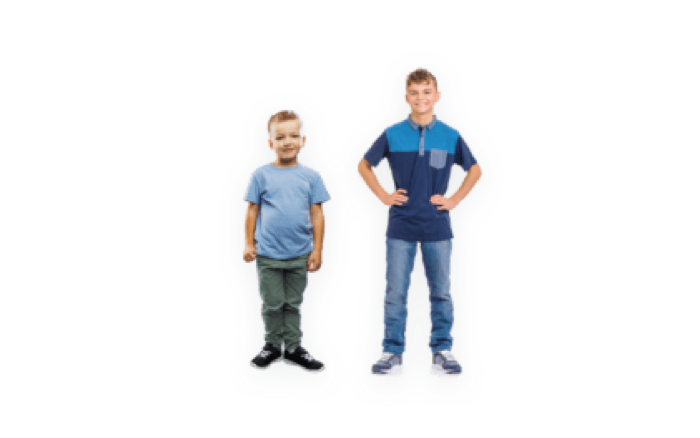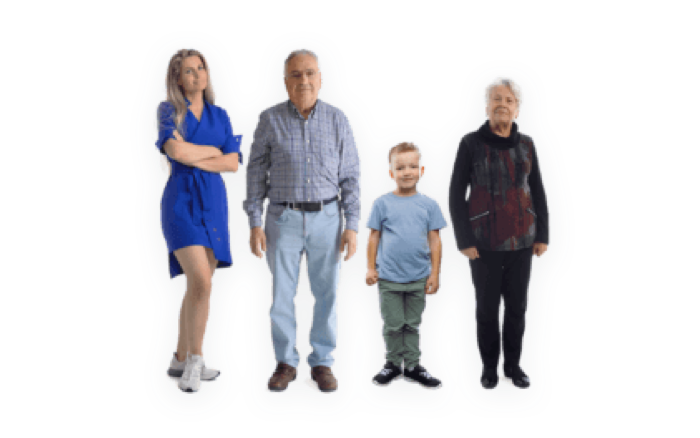Glossary
We may use certain terminology which you may not understand in documentation and discussions. To help you understand the DNA testing process, we have created a glossary stating an explanation of said terms
If you require further clarification or information, please contact us on 020 3603 1189 or sales@thatdnacompany.com and one of our specialists will endeavour to help you.
Likelihood Ratio or Combined Paternity Index
This is a calculation made from the frequency that given alleles appear in the general population. It tells us how many times more likely it is that the tested male is the father of the child, compared to an unrelated individual.
Probability of Paternity
This is derived from the likelihood ratio, but this time it is expressed as a percentage.
Prior Probability
In calculating the statistics, e.g. for a paternity test, we make a mathematical assumption it is equally likely that man is, and is not the biological father. This we refer to as equal prior odds of 0.5 or 50%. This then allows us to calculate the Probability of Paternity.
Close Male Relative
This means that a first degree relative of the tested male could be the biological father. This means the alleged father’s own father or brother.
Marker/Locus/Allele
Our body is in part comprised of cells, most of which contain the DNA molecule, which gives us our uniqueness as individuals. Certain parts of this molecule have been shown to contain specific regions that vary considerably between people who are not related and conversely, that exhibit a high degree of sharing between individuals who are related. These regions are referred to as ‘markers’ or ‘loci’ (singular: locus). Variant forms of these DNA markers are called ‘alleles’. There are two alleles found at each locus. We use 23 or so markers to determine if people are related to each other or not. This is robust science, which has been tested over thousands of cases, both for human identity testing and forensic purposes.
DNA profile
Once we have determined which alleles are present in all of these markers, we bring them together in a special format known as the DNA profile. In each DNA profiling experiment, we will see two alleles at each marker tested i.e. one which has been inherited from the individual’s biological father and one which has been inherited from their biological mother.
Each person’s cells contain DNA; half of which comes from the biological mother and half of which comes from the biological father. The problem is, we do not know which half !
In tests involving the child’s biological mother, our analysis is able to identify the half of the DNA (alleles) in the tested child that comes from the mother. As such, the remaining alleles must have come from the biological father. If we get a match across all of the remaining 15 alleles, then the tested man is the biological father of the child and we can then go ahead and calculate a ‘probability of paternity’. Conversely, if there are three or more mis-matches between the tested man and child, then we can conclude, with 100% certainty, that the tested man cannot be the biological father of the child.
For a positive result, we expect a match with the tested child at all or in rare cases, all but one of the biological father’s DNA markers. Rarely, we may observe a small genetic change (mutation), which shows itself as a mismatch between the tested man and child in one of the markers examined. Sometimes this appears as an allele that does not occur in either parent. This genetic change is a normal, albeit in the wider context a rare, event in human evolution and if we observe this, we make allowances in our calculations. Please note however that this scenario is also observed in those cases where the tested man is shown not to be related to the child as its biological father but as a close male relative i.e. the true biological father of the child is in fact a brother or the biological father of the tested man.
For immigration purposes, we are often asked to prove maternity. For example, in some parts of the world, it is common for a child to be brought up by an aunt from birth and to consider her to be her mother.
Surrogacy
There are two types of surrogacy which present different legal implications:
The first, “traditional” surrogacy, or artificial insemination, involves insertion of sperm into the fallopian tube of the surrogate mother, who will consequently be the biological mother of the child. As a result, the surrogate mother must agree to a series of legal obligations transfer her rights as the parent of the child to the individual(s) who have opted for surrogacy.
The second, “gestational” surrogacy, more commonly known as in vitro fertilisation (IVF), involves implantation of an externally fertilised embryo where the biological parents do not involve the participation of the surrogate mother; therefore the child and the surrogate mother are biologically independent of one another.
Pre-natal testing
Technology exists to determine the parentage of a foetus. We will not carry out this kind of testing. There are other companies, which can be found on the internet, who are prepared to do this.
That DNA Company: Extended Services

Do you require a DNA test for legal purposes? (An accredited test)
This is for changing the name on a birth certificate at the Registrars office, Home Office or Passport Office applications, family court proceedings, inheritance disputes or liaison with the Child Support Agency (CSA). As this is a different level of service, please visit our sister service, dadcheck® for this type of test.

Are you from the legal profession?
If you are from the legal profession (e.g. solicitor) or a Local Authority and require our DNA testing services, please call 0191 543 6334 or visit dadcheckgold.com






